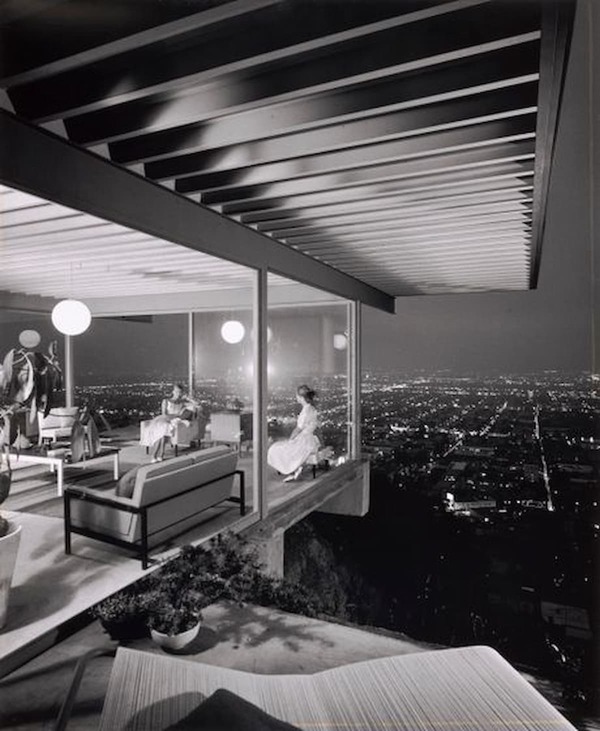
Golden beams of LA sunlight bounced off the crystal water and up onto the steel paneled roof and the thin glass doors. Bruce chased his little brother Mark across the small bridge and followed him as he dove into the pool. Shari, still in her wet bathing suit, yanked the massive sliding glass door open with all her might, then splashed into the pool in a cannonball. Mark, only five years old, giggled and scissored his chunky legs frantically to propel himself across the pool towards his older sister. Shari began laughing as Bruce swam under Mark and grabbed his toes mimicking a shark attack. Carlotta, their mother, dressed in a floral apron emerged from the still open door and called out, “Your father will be home soon, get ready for dinner.” Shari turned to her mother and began swimming to the side of the pool to climb out. The aroma of meatloaf, pasta, and carrots floated out of the open concept living area and throughout the home. The boys continued to splash around the pool chasing each other, ignoring their mother’s command. Evaporation from the sun and the children’s splashing caused the pool to lose gallons of precious water every day. Shari strolled into the house dripping wet as the carpet once again soaked up her trail. The fluffy olive shag carpet spanned across the main living area in their house always seemed somewhat damp as the three kids and often their father trekked back and forth between the pool and the kitchen. Charlotta looked up behind the counter, “Shari what do I keep telling you? Use a towel and for God’s sake stop bringing the pool inside the house!” Shari quickly spun and walked back outside. A 1967 Pontiac GTO roared and climbed up the windy road to the house. The freshly polished chrome reflected that same LA sunshine across the pavement. Palm trees swayed in the wind casting their dancing shadows along the land below. The classic muscle car slowed and turned a tight corner approaching a small and unusual looking house. The outside appeared to be constructed of entirely thin steel panels. The white tires turned, pointing the car into a narrow parking spot wedged between the house and a 1955 Ford Country Squire station wagon. The warm air greeted Buck as he stepped out of the car dressed in a narrow cut, brightly colored herringbone suit. His long day was over and he let out a sigh of relief. After fumbling with the door for a few seconds, he threw it open. “Daddy!” Screamed little Mark who had continued to ignore his mother’s calls to leave the pool. Bruce smiled and hugged his soaking wet son who only now had agreed to leave the pool. “Your fingers look like raisins, have you left the pool at all today?” Buck asked. “Mom made us get out at lunch” Bruce chimed in. Shari, who had changed out of her bathing suit for the first time that day, emerged from the bedroom to greet her father. Carlotta followed as she strolled across the patio to kiss her husband. The precious moment of the happy, youthful Stahl family reunited played out hundreds of feet above the city. After some chatter the five of them sat down to eat dinner as the sun set across the bustling city of Angels.
This scene depicts the typical family life experienced by the Stahl Family in their atypical, ultra famous home, The Stahl House. The Stahl House was more than just a house. It stood as the iconic, quintessential postmodern home that changed the paradigm of building materials, technology and the aesthetic of homes built throughout the country and world. It became idealized by dozens of magazines, newspapers, and a television program called the “LA Dream.” Buck and Carlotta Stahl met through work, while Buck worked as a purchasing agent for Hughes Aircraft and Carlotta held the position of secretary for North American Aviation. They married and raised three children as a typical middle class family chasing the American dream. Buck identified himself as a visionary and an artist.[1] He had hopped from airlines to graphic design to sign painting and even at one point professional football. The Stahls settled in the up and coming but still underdeveloped and affordable city of Los Angeles. In 1954, the newlyweds purchased an empty lot in the barren hills of West Hollywood for $13,500.[2] After six years, two mortgages, and countless negotiations the Stahls built their dream house with the help of the thirty four year old ambitious architect Pierre Koenig. Koenig had taken the project on as a challenge as the lot was said to be “not suitable for building.”Julius Schulman, the photographer, captured the truly dynamic beauty and striking figure of the project when the home debuted on the Arts and Architecture magazine cover.
The Arts and Architecture Magazine published Julius Schulman’s photo, The Stahl House on their front page in 1960 as a promotional piece. The Stahls, unable to afford to build the house independently, negotiated a deal with the magazine to fund the project. The home pictured is cantilevered over a cliff soaring above the city lights below. On the magazine cover the steel beam of the roof cuts across the page reaching into the sky like the wing of a Boeing 777. The house is lit up and almost portrays a glowing atmosphere while the city below is dark and blurry. The clarity of the house makes the photo feel so real as if the viewer can step right into the scene. If the viewer squints their eyes all they see is the glowing glass box lit up by the spheres of light dangling from the ceiling. The modern, rectangular furniture flanks the spacious room. Tall and leafy Interior plants reach into the photo offering a homey and natural aesthetic to the space while shrubbery springs up on the side of the house offering a playful yard feeling. The simple, clean, and uncluttered layout of the room appears effortless and inviting. The sleek lines and glassy walls point to the horizon and create a sharp contrast between the traditional colonial houses lurking in the valley below. The dramatic angles illustrate the perfect perspective shot and draw the viewer into the brightness of the home then slowly out to the city. The LA roads point in parallel to the roofline and concrete floor adding to the rocket ship sensation. Schulman positions the camera to create drama contrasting the light against darks and the industrial, manufactured, and robust beams of steel and concrete against the organic and simple furniture, plants, and atmosphere. The attractive young women in the photo were not the Stahls but friends of the photographer. They appear as if they are high society women or movie stars lounging in their light colored and clean cocktail dresses and heels as if they were taking a break from an elegant party to gaze over the city. The woman on the right sits upright as if she’s listening intently to the woman on the left who lounges with her head resting on her hand. Perhaps she is sharing some juicy Hollywood gossip. The viewer seems to be looking in on an intimate moment shared by two young friends. The girls helped Schulman project the romanticized dream of California and LA which brought the Stahl home and family fame. These artistic choices that depict a vibrant contrast from the land below make the house appear to be more than a house but a living space in the sky.
The photo reflects the 1960’s fairytale reputation of Los Angeles and the California dream of glamor and modern beauty. At this time Los Angeles was booming with the growing military investment in the area and Hollywood was capturing the imagination of the nation. The Stahl house symbolized the optimism and forward looking spirit of the age. It rejected traditional building techniques and styles and embraced a new fresh mid-century modern look. Ironically, the Stahls were a traditional middle class family and experienced poverty as Buck transitioned careers. This was not a home of the rich and famous. The house was only 2200 square feet and all three children bunked up in one small bedroom. This normal family had a dream and this was an era where people's dreams could become a reality. The home is an icon of American modernism and speaks to the middle class reaching for the stars. For the first time in history, anyone, especially the middle class could own a home. As America boomed with big ideas and raced to launch rocket ships into space this home shot out over the city horizon as a symbol of the great American imagination.
[1] Podcast, The Design Book. “The Stahl House: Shari Stahl Gronwald and Bruce Stahl
[2] Rocheleau, Mitchell. “Nine Things You Should Know about the Stahl House – Case
Works Cited
“Koenig’s Case Study House No. 22 as Home.” Los Angeles Times, Los Angeles Times, 27 June 2009, www.latimes.com/home/la-hm-stahl27-2009jun27-story.html.
Podcast, The Design Book. “The Stahl House: Shari Stahl Gronwald and Bruce Stahl.” Decorating by the Book, Decorating by the Book, 7 Feb. 2022, www.decoratingbythebook.com/home/the-stahl-house-shari-stahl-gronwald-and-bruce-stahl#:~:text=Shari%20Stahl%20Gronwald%3A%20Hi%2C%20my,and%20I%27m%20her%20brother.
Rocheleau, Mitchell. “Nine Things You Should Know about the Stahl House – Case
Study House 22.” ROST ARCHITECTS, ROST ARCHITECTS, 18 Feb. 2023, www.rostarchitects.com/articles/2020/10/6/nine-things-you-should-know-about-the-stahl-house-case-study-house-22.

